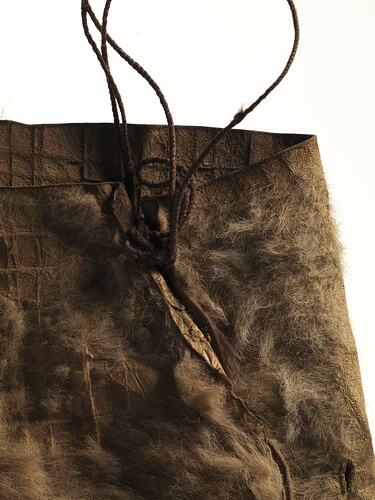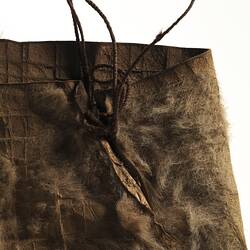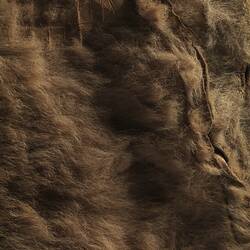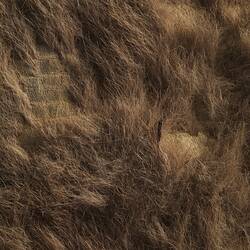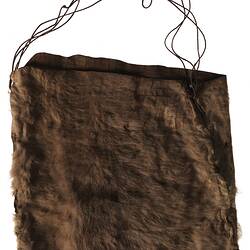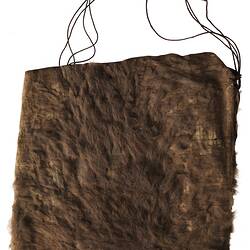Summary
This skin bag was used to store small articles. It is made from the skin of a red kangaroo, with a four-strand handle made from hand spun plant-fibre string.
The fresh skin of the kangaroo was scraped to remove the fat, and then pegged out on a flat surface using small wooden pegs. The location used to lay the skins out was an important part of their manufacture as clay flats contained chemicals that assisted curing, making the skins soft and long lasting.
When the skin had dried, cold ashes or dust were thrown on it to absorb any exuded grease. If the weather was damp or the curer in a hurry, the skins were pegged out near the fire. Once cured and dried, the skins were cut into rectangular sections and rubbed with stones, or scored into a diamond pattern using a flint or shell, to make them supple. Holes were then pierced around the edges and the skins sewn together with sinew.
Men from many differing groups throughout south-eastern Australia made and carried kangaroo-skin bags such as these with some small differences in their design and preparation. When they were not hunting, the men used these bags to hold their tools and implements.
Local Name
Yammaru
Physical Description
Kangaroo skin bag, multi-strand string handles made from vegetable fibre string.
Significance
This bag comes from the Kati Thanda (Lake Eyre) region of South Australia which is the traditional lands of the Arabana peoples. The Arabana people have lived at Kati Thanda for countless generations and continue to celebrate, preserve and hand down their culture and way of life to future generations.
In 2012, after a 14-year fight, the Federal Court recognised the Arabana people as the Traditional Owners of Kati Thanda, granting Native Title rights to over 68,000sqm of land.
More Information
-
Object/Medium
Bag
-
Maker
-
Cultural Groups
-
Locality
-
Date Produced
-
Date Collected
-
Object Measurements
330 mm (Length), 225 mm (Width), 25 mm (Height)
-
Classification
-
Date Made
-
Maker
-
Clan/Language Group
-
Place Made
-
Indigenous Region
-
Keywords
-
Collection Names
-
Type of item
-
Discipline
-
Category
-
Collecting Areas
